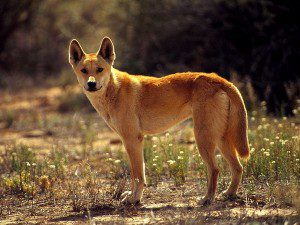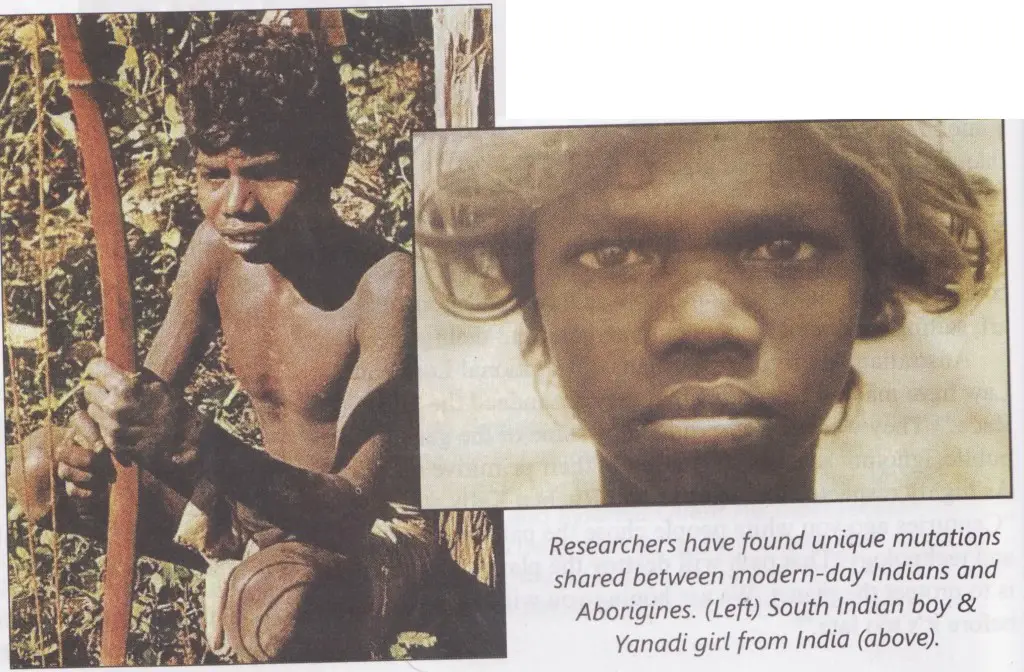DNA Study Proves Dingoes are NOT Related to Dogs – but Ignores Implications
Contributing Writer for Wake Up World
It was over 30 years ago, while studying for a degree in archaeology at the University of New England, when I first heard talk related to the lineage of the Australian dingo. So certain were the experts of the exotic ancestry of the dingo that most were confident enough to subscribe both to a specific point of origin and a general date of entry to Australia.
The consensus among academics was that the dingo was an import, coming from India and entering Australia around 5,000 years ago, and that it shared a genetic relationship to a native dog in the south of India. In fact, such was the consensus in academic circles that these theories were taught as fact. There was no alternative theory ever discussed, and the issue was considered closed – and remained that way until a few days ago.
At a superficial level it all made sense: The Dravidian language of Southern India has so many similarities to some Original Tasmanian languages that it defies any explanation other than direct conversation. So too the same Indian/Original contact is not only evident in shared words, but through shared genetics.
According to a Sydney Morning Herald report on 23rd July 2009, inexplicably tucked away in their ‘diet and fitness’ pages, revealed that “Dr. Raghavendra and researchers from the Indian-government backed Anthropological Survey of India project found unique genetic mutations were shared between modern-day Indians and Aborigines”. Scientists conducted genetic tests on 966 individuals from 26 of India’s “relic populations” and identified seven Indian people who had “unique mtDNA Australian Aboriginal signatures”. Knowing that some remote tribes in the southern region of India used to hunt with boomerangs, it seems reasonable to have assumed that during this broad spectrum of cross-continental contact, some Indian dogs were taken back to Australia to assist the men in the hunt.
Everything was in convenient accord. Or so it seemed. But there was always one insurmountable hurdle lagging in the background….
The elemental inconsistency in this theory was as obvious 30 years ago as it is today; there are no corroborating accounts in Original Lore or Dreaming stories of dingoes coming from any other country, rather, the Original peoples’ oral accounts stand united in one founding principle – that the dingoes belong to this land. I have personally been told of a Dreaming story in which all humans and animals were gathered in one place in Australia, and the Earth began to split apart. Once the Earth had settled, on one side stood humans and the dingoes, and on the other, all other animals.
Many Original tribes have a long oral history that “is intertwined with the dingo”. As Joe Gala, an Elder of the Butchulla tribe (Fraser Island) noted, “the dingo, he come part and parcel with the land”. In the Grampians / Gariwerd (Victoria, in Australia’s south east) there are over 200 known rock art sites, some of which have been dated at over 20,000 years. “One of the most culturally significant is Bunjil’s Shelter, depicting the traditional creator of the land and his two dingo helpers”. The Dreaming Story associated with this site details the actions of “the Bagadhimbri” who were “the two brothers and creator gods. They arose from the ground as dingoes and made water-holes…”
If indeed the dingo is considered “part and parcel” of the land, and was part of a first creation story of the Original people, any suggestion of its overseas ancestry and entry to Australia 5,000 years ago stands in complete opposition. Moreover, the same popular belief of an off-continent heritage is also in contradiction with the latest genetic studies conducted on full-descent dingoes by a group of highly respected Australian academics.
Dog Gone… Where?
An article appearing in the Sydney Morning Herald (page 12, March 29, 2014) titled, Dog Gone: Scientists Confirm the Dingo is a Unique Species, should have begun a lively intellectual debate over all manner of related historical and genetic issues. Afterall, “for the first time scientists have confirmed the dingo is a species in its own right”. However in today’s ignorant academic climate, we have no doubt this paper will have its 15 minutes of tabloid fame and then disappear as yesterday’s quirky news byte.
Led by Dr. Mathew Crowther of Sydney University, PhD in ecology and evolution, the research team “tracked down 19th century dingo specimens that lived before interbreeding with European dogs became widespread”, and conducted extensive research on “a mix of skeletons, skins and preserved specimens”. This enabled them to guarantee the pure lineage of the dingoes they studied – something other previous researchers cannot claim. In a less-than-glowing assessment of the methodologies of previous studies, Crowther noted that until now, “everyone has based their descriptions [of pure blood dingoes] on the drawing of a dingo in the journal of the first Australian governor, Arthur Phillip”, sketched by the former Navy-man between 1788 and 1795.
According to Dr. Mike Letnic (BSc and PhD) from Sydney University’s School of Biological, Earth and Environmental Sciences, the researchers found that “the dingo is distinct from what we describe as a domestic dog; it’s a distinct form of canid”. Dr. Crowther went on to conclude that dingoes “appeared not to be descended from wolves, were distinct from dogs and were not a subspecies”.
With that being the case, then what are they? And from what animal did they descend?
Popular science previously alleged (and taught as fact) that all dogs evolved from wolves, and that as a logical consequence, all canines – including dingoes – are related despite the passing of time and degrees of separation. But if genetically “distinct from dogs” and “not descended from wolves”, what are these dog-like creatures? A meat-eating species of wild rabbit?? Or a unique genetic classification of their own?
As the findings of this research don’t accord with any accepted theory of how the dingo got to Australia, we can therefore discard previously held notions of this non-dog being related to dogs in India or anywhere else on the planet for that matter. Logic and science both demand there was no dingo interaction with any wolf or dog outside Australia. Furthermore, as the dingo bears no genetic link to any other canid, then common-sense indicates it didn’t come from elsewhere, but from the time of its genesis in Australia it was a separate species and remained so until the British Invasion.
Moreover, if the dingo has no genetic link to any other canine – or as the SMH reporter phrased it, if “our native mutt is not really a mutt” – then surely this research has only just begun.
Filling in the Gaps
The Sydney University research team’s methodology, particularly the use of 19th century dingo specimens, is commendable. Despite this, these esteemed scholars, dutifully employed by government, were clearly unwilling to venture the extra millimeter in their assessment and step outside the academic box. If they were, they would have at least tried to fill in the gaps exposed by their findings. But in their absence of intellectual fortitude, it seems I will have to do it for them.
But before I do, it may be of benefit to contrast a mitochondrial-DNA study conducted on another Australian species – the First Australians – and similarly compare their human genes to the Homo sapien sapiens that reside outside Australia. Lo and behold, the results are exactly the same! The mtDNA of the Lake Mungo Man specimen (known as WLH3) found in south-eastern Australia is estimated to be over 60,000 years old and is still yet to be matched with any other strand of human genetic material. In fact, the mtDNA extracted from WLH3 was so dissimilar to any other known... Read on here
Tags:
Replies to This Discussion
-
Permalink Reply by Sweettina2 on October 10, 2014 at 3:26pm
-
Very interesting, thanks Maria!
"Destroying the New World Order"
THANK YOU FOR SUPPORTING THE SITE!
Latest Activity
- Top News
- ·
- Everything
The Hunt - Official Trailer [HD]
Legacy of Supposedly Inferior Aircraft Outmatching Their Enemies
What is Area 2 and What Goes on There?
STRANGE THINGS HAPPENING IN YELLOWSTONE
Austrian police raid house of man who leaked Israeli ambassador video making genocidal comments
WARHAMMER 40,000 | 1980's GRIMDARK MOVIE
The Ringside View
Is America on the brink of a Dire Emergency
© 2025 Created by truth.
Powered by
![]()

